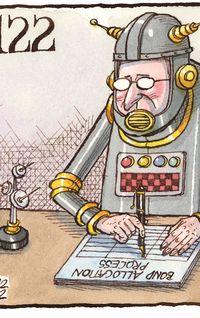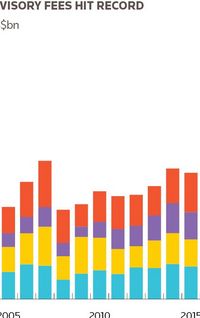The Tokyo Stock Exchange is restructuring in a process designed to rationalise its board structure, improve corporate governance and attract more investors to Japan. But do the changes go far enough?
It’s all change at the Tokyo Stock Exchange, or at least it will be on April 4. But opinion is divided about whether the planned upheaval will do enough to inject new life into one of the duller corners of the world’s equity markets.
Japan Exchange Group, which was formed in 2013 through the merger of Tokyo Stock Exchange and Osaka Securities Exchange, is to simplify the TSE, cutting the five market sectors to three. The current First, Second, and Mothers sections, and the two sub-sections of Jasdaq will be split into Prime, Standard and Growth.
As part of the transition, JPX has tightened its listing requirements, established minimum levels of capitalisation, increased the number of tradeable shares, addressed cross-shareholding issues, tidied up the composition of the indices and enhanced the quality of corporate governance.
Although the move has been almost universally welcomed, opinion is divided as to whether the changes go far enough to fundamentally change international investor perception of corporate Japan. Some think JPX has missed an opportunity to make a real difference, while others are more sanguine about the pace of change.
“It's quite subjective. Some think it's not going to change anything, but I think it should be seen as another incremental step towards a better standard of corporate governance in Japan,” said Alex Lee, a global equities portfolio manager at Columbia Threadneedle Investments.
What is widely accepted is that the structure of Japan’s cash equity market is ambiguous and needed rationalising.
“As with anything in Japan, things tend to be quite slow in terms of reorganisation,” said Michael Wu, a senior equity analyst at Morningstar. “It has been a long wait for the boards to be restructured, something that should have happened a while ago. It will, at least, bring some clarity for companies and for investors.”
Legacy boards
The ambiguity stems from the merger of the two exchanges when TSE became the venue for cash equities and OSE the place for derivatives trading.
“At the time of the merger, the respective stock exchange classifications were kept unchanged under the cash equity TSE umbrella, so that investors and listed companies would not be confused as to where they belonged,” said Ayla Wagatsuma, manager of the TSE.
But the resulting five segments “became too much for investors as there was little difference between Jasdaq Growth and Mothers,” she said. There were also concerns that the market concept of the Second section, Mothers, and Jasdaq overlapped.
It was important for JPX to clarify the areas of confusion not just for the sake of investors and companies, but also for the long-term revenue generation prospects of the exchange itself.
“The primary objective of an exchange is to provide liquidity,” said Koichi Niwa, an analyst at Citigroup. “For that, it needs to attract enterprising, growing companies and it needs to provide a good trading platform. Liquidity is key to TSE as over 60% of its revenue comes from trading commissions and clearing fees.”
Hold me back
A review of the market’s classifications started in 2018 with a public consultation to discover concerns from investors and companies. The review determined there were insufficient incentives for listed companies to increase corporate value, and that Topix was not functioning as an efficient investment tool – the benchmark referenced all the companies listed on the First section, which at more than 2,000 was too many for effective engagement.
A lack of liquidity in the underlying shares was also an obstacle to its value as a benchmark.
“The implications of the review were so huge that the venue of discussion passed up to the Japan’s Financial Service Agency,” said Wagatsuma. “It came up with a final report in December 2019. And once we had the proposal, we started building the rules.”
A concept paper was published by JPX in February 2020 and the process was completed in June 2021.
The result of all that work will be the April restructuring. The basic concept is to incentivise sustainable growth in, and value creation of, its listed companies to attract the interest of a range of domestic and foreign investors. It is also an opportunity to tighten governance issues and company practices that beset corporate Japan.
Don’t get cross
The Prime market becomes the segment for companies that have a tradeable market capitalisation or free-float of at least ¥10bn (US$87m), a good standard of corporate governance, and a commitment to sustainable growth through dialogue with investors.
“We asked investors what they deemed as an investible size,” said Wagatsuma. “We think ¥10bn as a minimum requirement is sufficient, although some larger-sized investors would like more.”
But it is not just the size of a company’s market capitalisation that is important. If the Prime segment is going to be investible for institutional investors, the liquidity of the counter is significant.
To ensure the ¥10bn free-float was a true representation of tradeable shares, the JPX had to address the thorny issue of cross-shareholdings, removing shares held by domestic banks, insurance companies, and business corporations from the equation.
As well as reaching that minimum capitalisation, a company seeking to list on the Prime segment needs a minimum daily average turnover in its shares of ¥20m. There are also restrictions based on business and financial performance, such as annual sales of ¥10bn and a free-float of 35% of the total shares available.
The Standard section is for companies with a tradeable market capitalisation of at least ¥1bn, alongside basic corporate governance. High-risk companies with high growth potential and commitments to timely disclosure on progress will populate the exchange’s Growth segment.
Governance revision
As part of the listing requirements for the Prime section, TSE has revised its corporate governance code. The revisions increase the presence of independent board members at each listed company to one-third, from at least two members previously, promote diversity in senior management, and require the development of a sustainability policy and disclosures based on recommendations from the Task Force on Climate-related Financial Disclosures.
There remains a fair degree of scepticism as to whether these changes mark a significant enhancement in governance.
“It's a step forward for Japan in that the TSE requires companies in the Prime sector to meet the enhanced code but, in reality, it seems more like a … perfunctory achievement than anything else,” said Niwa.
In addition, a “comply or explain” option in the code could mean that very little changes, although some are more hopeful.
“The criteria aren’t that strict by global standards,” said Lee. “But the important thing is that this is a signalling mechanism that will help improve corporate value over time.”
Topix of conversation
Another key component of the restructuring is the revision to the Topix index, which at the moment comprises all common stocks listed on the First Section. The aim is to improve its functionality as an investible index, irrespective of a company’s position in the market segments. All companies in the First section that conform to the new listing criteria will be eligible for the new Prime index.
The new criteria will reduce the number of stocks included in the new Prime index but not by enough for some.
“There are too many stocks in the new Prime index,” said Takeo Kamai, head of execution services at CLSA Japan. “The Prime index has over 1,800 stocks in the index versus the Topix which has just under 2,200 stocks and over three and a half times as many as in the S&P 500.
In a note in January 2021, CLSA calculated that removing companies of less than ¥10bn free-float market cap will reduce the number of companies by 681, but that still leaves the Prime index with many more stocks than its international peers.
Even with the new criteria, those with a tradeable market cap of under ¥10bn will find their weighting only gradually reduced in stages, starting from October.
“One of the main hopes at the start of the process was that it would notably reduce the number of names in the Prime section,” said Lee. “It has been a bit of a disappointment – although not perhaps unexpected. Generally speaking, change happens slowly until consensus view shifts, and then – all of a sudden – change happens quickly. Drastic change is therefore not part of Japanese culture.”
No panacea
While the restructuring of the TSE may not be the panacea to the ills of corporate Japan, it is at least a nudge in the right direction for companies that have traditionally fallen short when it comes to corporate value and returns on capital.
There is certainly still room for improvement.
“Japan wants to provide the infrastructure to allow companies to do better by themselves. And I think that companies are figuring that out now,” said Lee. “I think the restructuring is another stage in driving meaningful change in Japan over the next decade. But it's not going to happen overnight.”
JPX insists that the TSE restructuring is just the first stage of an ongoing process of refinement. “We're focused on a smooth transition on April 4, but it's not the end of this project; it's more like a starting point for us,” said Wagatsuma.
To see the digital version of this report, please click here
To purchase printed copies or a PDF of this report, please email leonie.welss@lseg.com














